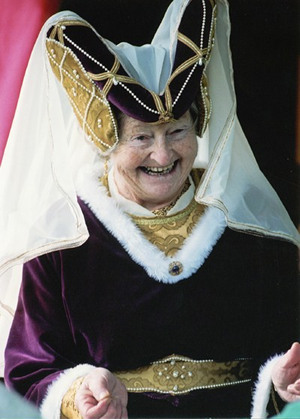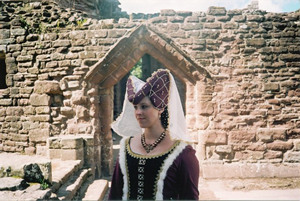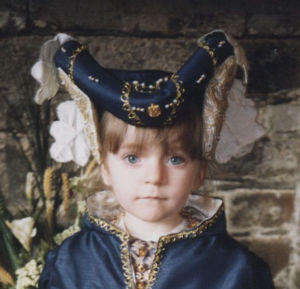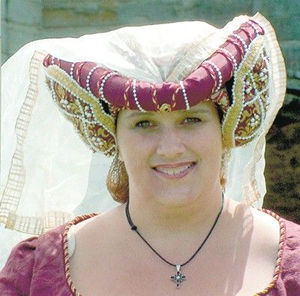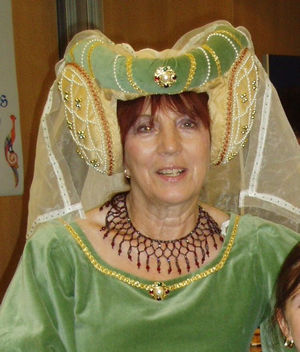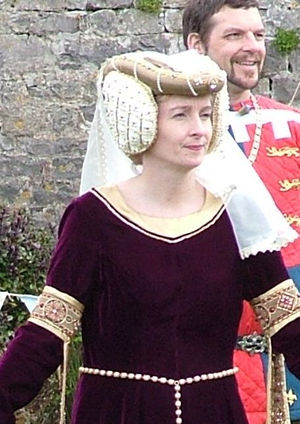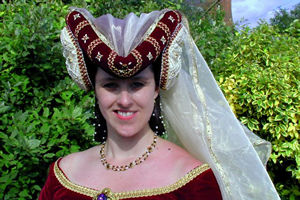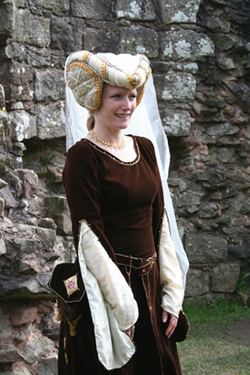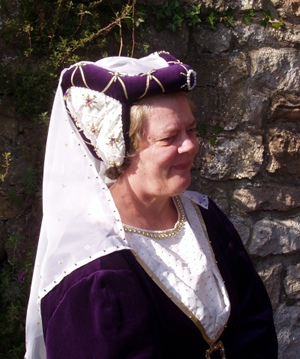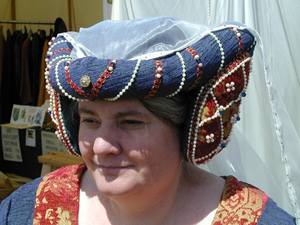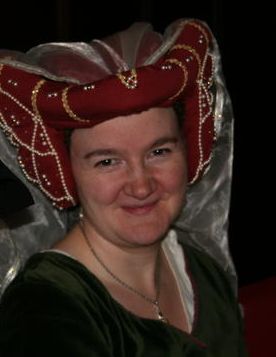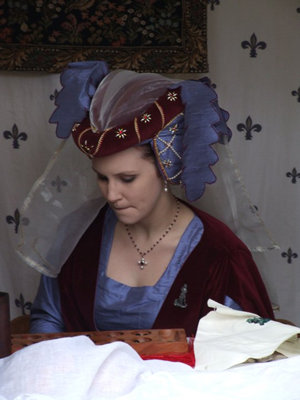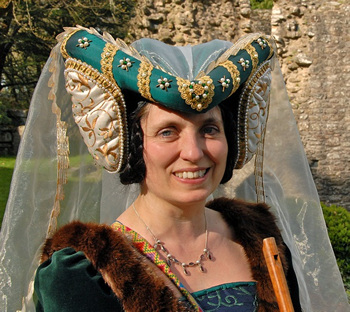
Historical Hats, Costumes & Accessories |
||
|
Home Crown Hood and Liripipe Man´s Cap Chaperon Torque Bycocket Crispinette Tressour Crispinette Nebule Templars Cross Tree Headdress Heart Shaped Hennin Attor de Gibet Jewelled Coif Hennin Flowerpot Hennin Halo Bonnet Reticulated Caul Flemish Hood Early Gable Headdress Tudor/Elizabethan Pouch Gloves Wedding Dresses Specialist Commissions Kats Kittens Authentic Effigy Based Headwear Miscellaneous Contact Links |
The Heart Shaped Hennin C. 1405 - 1470 It still had the golden fretwork, the "Caul" confining the hair on either side of the face, but no longer had the fillet over the cauls. It had a padded roll instead. This echoed the silhouette of the Cross Tree Headdress at first, width being the dominant feature. Gradually the padded roll started to extend upwards as did the wires of the Cross Tree Headdress. Both headdresses were often referred to as the "Cow Headdress" because of the resemblance to cows horns. A holy Bishop preached from the pulpit about fashionable women resembling "Horned Snails" and that women were "Abusing their crowning glory by covering their hair". A perfect example of this style of headdress can be seen in a carved miserecorde at Ludlow Church, Shropshire. As the outer edges of the padded roll extended upwards, the middle of the padded roll descended into a dip at the centre of the forehead and was made from coloured silks, velvets or linen. It became encrusted in jewels, pearls and plaques of enamels. Over these were draped semi-circular or square veils all of which were hemmed with "rich stuff". Lady Joyce Halsham, 1441, in West Grinstead Church, Sussex,, Lady Vernon, 1450, in Tong Church, Shropshire and Lady Staunton 1458 in Castle Donnington Church, Leicestershire are all effigies wearing this style of headdress. Other examples of the "Heart Shaped Hennin" can be seen on women in the "Tres Riches Heures- Duc De Berry" Book of Hours. In 1440 the top edges of the padded roll of the "Heart Shaped Hennin" were drawn closer together still, producing yet another style of headdress called the "Forked Headdress". A Long "Tippet" or "Streamer" type veil was attached at the back or side of it. The Heart Shaped Hennin continued to be used by upper and middle classes throughout this period in time but discarded it completely after 1470.
Headdress Design © 2001 - 2011|Site Design © 2005, 2006, 2007, 2008, 2009, 2010, 2011, 2012, 2013 All Items produced by Kats Hats © are subject to full copyright and may not be reproduced under any circumstances. Individuals have my permission to print single copies of the pictures or texts on this website for research for non-commercial purposes and private study provided Kats Hats © name, the copyright notice and this permission notice are preserved on all copies. Linking to this site is allowed without permission. For any other use please contact me. | |
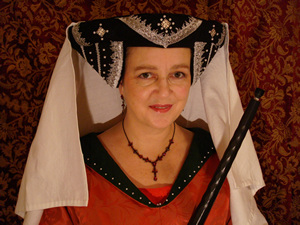 The
The 